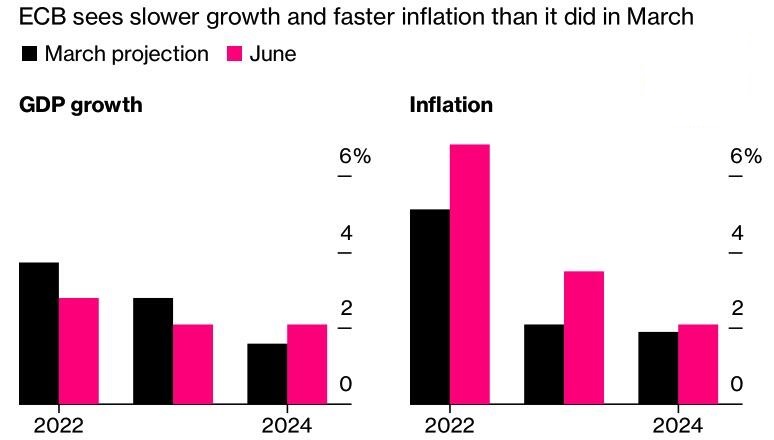The ECB hawks should be pleased with the June meeting’s results. However, following an insignificant strengthening, the euro crashed. What’s the matter? Let us discuss the Forex outlook and make up a EURUSD trading plan.
Weekly euro fundamental forecast
The June meeting of the European Central Bank satisfied the hawks, although its final results, the fall of the EURUSD and the widening of yield spreads in the euro-area debt market, allowed yesterday’s doves to express their dissatisfaction.
In fact, there are no doves left on the Governing Council. There are officials who want to slowly raise rates. There are those who insist on faster monetary tightening. The so-called aggressive hawks dominated in June. The ECB decided to quit the QE, signalled a 25-basis-point increase in borrowing costs in July, and left the door open for a 50-basis-point rate hike in September if inflation does not show signs of a sustained slowdown by then. It might seem good news for the euro. However, after a slight increase, the EURUSD crashed.
There are several reasons. First, the ECB is still lagging behind the Fed and other world’s leading central banks. The regulator just gets rid of negative rates, its 8-year experiment, which can hardly be considered successful. Secondly, the euro-area GDP forecasts are downgraded while the expected inflation rate increases, suggesting upcoming stagflation, which may mean a pause in the monetary restriction process. Investors are sceptical about futures market expectations of a 150-basis-point increase in the deposit rate by the end of 2022. There are four Governing Council meetings left before the end of the year, and such a trajectory suggests two hikes by 50 bps and another two by 25 bps, which looks unlikely.
ECB forecasts for GDP and inflation in euro area
Finally, investors were disappointed by the lack of a clear plan to avert the eurozone fragmentation. Christine Lagarde did not tell how the ECB is going to deal with the growth of bond yields of the euro-area peripheral countries. PIIGS economies, like Italy, are still weak and burdened with debt while rising borrowing costs will increase the cost of debt servicing, worsening the risks of recession and default. The latter may result in the currency bloc break-up.
That is why investors are focused on the yield spread between Italian and German bonds, which has widened to the highest value since 2020, according to the ECB June meeting results.
Weekly EURUSD trading plan
Therefore, no matter how hawkish the ECB officials sound, the objective factors will hinder the monetary tightening process. Furthermore, if US inflation doesn’t slow down as much as it is expected, investors will believe in the Fed’s aggressive monetary tightening, pressing down the EURUSD. One could sell the pair on the rebound from the resistances at 1.065 and 1.0675, or on the breakout of the support at 1.061.

Myanfx-edu does not provide tax, investment or financial services and advice. The information is being presented without consideration of the investment objectives, risk tolerance, or financial circumstances of any specific investor and might not be suitable for all investors.
Go to Register with LiteForex Platform
Financial Trading is not suitable for all investors & involved Risky. If you through with this link and trade we may earn some commission.



















